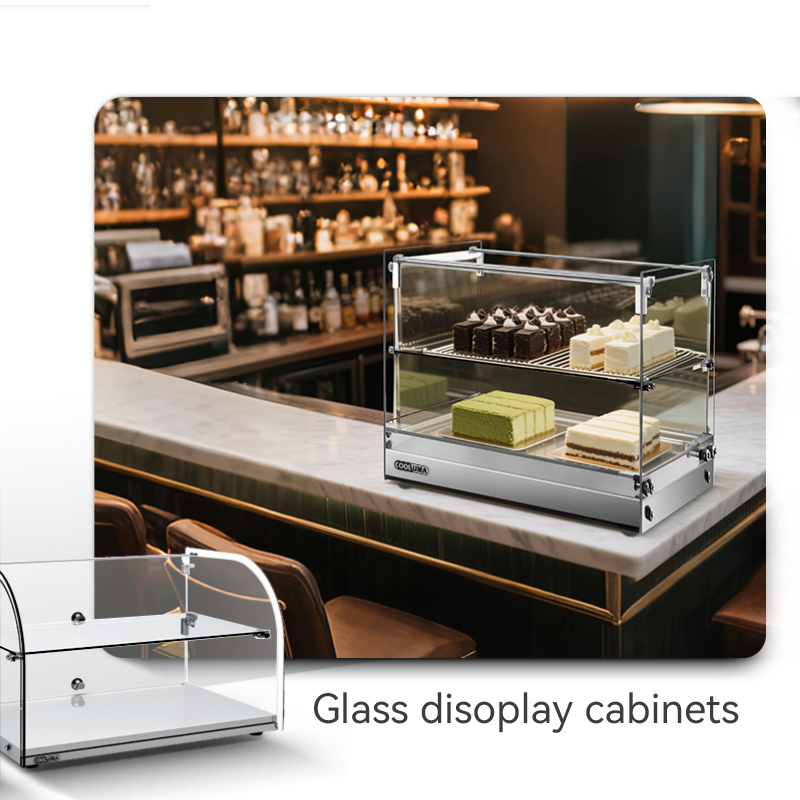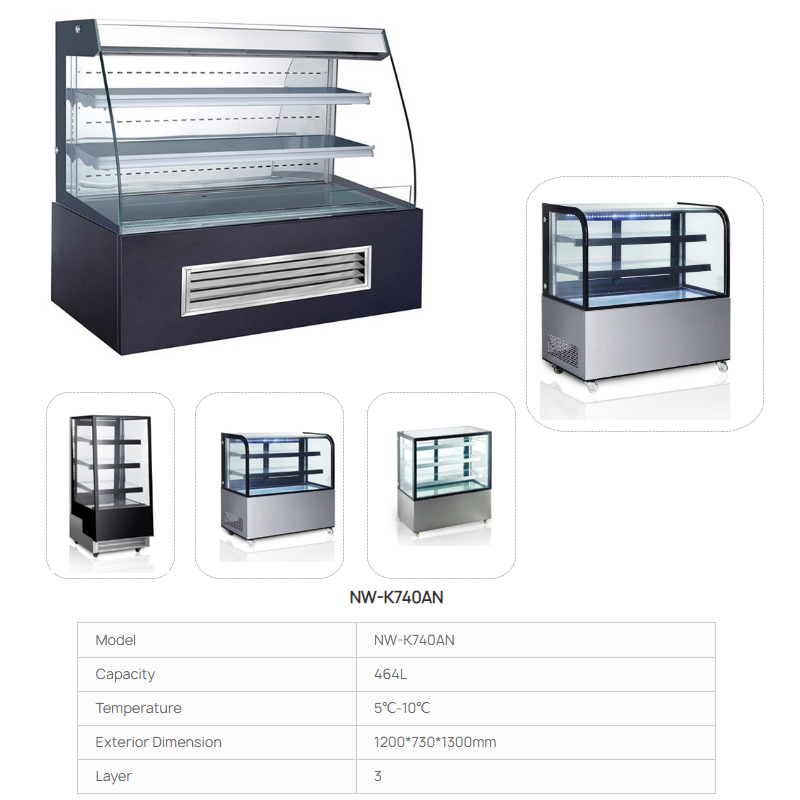There is no unified standard for the dimensions of bread cabinets in small supermarkets. They are usually adjusted according to the supermarket space and display needs. The common ranges are as follows:
A.Length
Generally, it is between 1.2 meters and 2.4 meters. Small supermarkets may choose 1.2 – 1.8 meters for flexible placement; those with a slightly larger space can use more than 2 meters to increase the display quantity.
B.Width
Most are 0.5 meters – 0.8 meters. This range not only ensures sufficient display area but also does not overly occupy the aisle space.
C.Height
It is divided into upper and lower layers. The height of the bottom layer (including the cabinet) is usually 1.2 meters – 1.5 meters, and the upper glass cover part is about 0.4 meters – 0.6 meters. The overall height is mostly 1.6 meters – 2.1 meters, taking into account both the display effect and the convenience of picking and placing.
In addition, there are small island – style bread cabinets, which may be shorter and wider. The length is about 1 meter, and the width is 0.6 – 0.8 meters, suitable for small spaces such as doorways or corners.
If it is a customized type, the dimensions can be customized according to requirements. The production cycle depends on the specific quantity and functional complexity. There are always spare common – use models in the warehouse. For purchasers, the probability of customization is relatively high as they all have their own exclusive brands.
The specific manufacturing process of a 1.2 – meter small table – type bread cabinet:
(1) Design and material preparation
Design the cabinet structure (including the frame, shelves, glass doors, etc.) according to the size requirements, and determine the materials: Usually, stainless steel or galvanized steel sheets are selected for the frame and inner liner (rust – proof and durable), tempered glass for the display surface, and polyurethane foam material for the insulation layer. At the same time, prepare hardware parts (hinges, handles, slides, etc.) and refrigeration components (compressor, evaporator, thermostat, etc.).
(2) Cabinet frame manufacturing
Cut the metal sheets and build the main cabinet frame by welding or screwing. Reserve the positions for the shelves, installation slots for the glass doors, and the placement space for the refrigeration components to ensure the structure is stable and meets the dimensional accuracy.
(3) Insulation layer treatment
Inject polyurethane foam material into the inner cavity of the cabinet. After it solidifies, it forms an insulation layer to reduce the loss of cold air. In this step, it is necessary to ensure uniform foaming to avoid voids affecting the insulation effect.
(4)Inner liner and appearance treatment
Install the inner liner sheets (mostly stainless steel for easy cleaning), paint or film – stick the outside of the cabinet (select colors according to the design style), and install the shelves (with adjustable height) at the same time.
(5) Refrigeration system installation
Fix components such as the compressor and evaporator in the designed positions, connect the copper pipes to form a refrigeration circuit, add refrigerant, and test the refrigeration effect to ensure that the temperature can be stably controlled within the suitable range for bread preservation (usually 5 – 15℃).
(6)Installation of glass doors and hardware parts
Fix the tempered glass doors to the cabinet through hinges, install handles and door locks, and adjust the door tightness to avoid cold air leakage. At the same time, install accessories such as thermostats and lighting lamps.
(7) Overall debugging and quality inspection
Power on to test the refrigeration, lighting, and temperature – control functions. Check the door tightness, cabinet stability, and whether there are any flaws in the appearance. After passing the inspection, complete the packaging.
The entire process needs to take into account the structural strength, insulation performance, and refrigeration efficiency to ensure that the bread cabinet is both practical and meets the display requirements.
Note that the manufacturing process of commercial bread cabinets of other sizes is the same, only the cycle is different. The adopted technologies and specifications all comply with the contract specifications and are legally binding.
For the customization of bread cabinets at ultra – low prices, it is necessary to pay attention to choosing the right brand suppliers. Nenwell states that it is important to reasonably plan your own needs and understand the technology and services of each brand manufacturer.
Post time: Aug-04-2025 Views:


